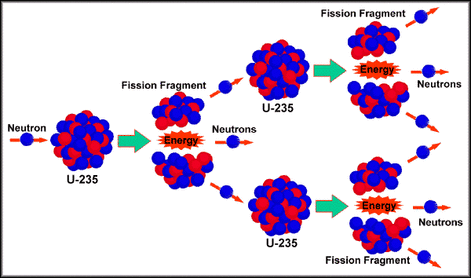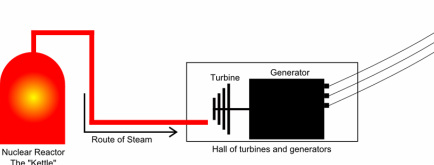Nuclear Energy
Nuclear Energy comes from the splitting uranium atoms in a process called fission.
Fission

Fission is when a lone neutron enters a nucleus and causes the atom to be unstable causing the atom to begin to split. When the atom splits, another lone neutron enters another atom and splits that atom. This process keeps repeating.
Want to try fission out? Click here!
Want to try fission out? Click here!
Power Plants
Of course, you've probably heard of Nuclear Power Plants. In those plants they use the heat that is created from nuclear fission in a contained area, to turn water into stream. The steam then powers generators to produce electricity. While in a normal power plant, they heat the water by burning coal.
Want to know more on Nuclear Power Plants?
Click Here!
Click Here!
The Pros and Cons
PROS
- Nuclear power plants let off less carbon dioxide, and other harmfulgases, in the air
- Lowers operating costs
- Has the potential to create enough energy to power cities, unlike solar power plants
- Lowers operating costs
- Has the potential to create enough energy to power cities, unlike solar power plants
CONS
- Lots of money must be put in, in order to build one of these plants.
- Waste from the plant can last 200-500 thousand years
- If there is an accident, there is a high-risk, and some of the risks are still unknown
- Waste from the plant can last 200-500 thousand years
- If there is an accident, there is a high-risk, and some of the risks are still unknown
Thanks for checking out Nuclear Energy!
For more information about anything Nuclear, Click Here!
Home
For more information about anything Nuclear, Click Here!
Home

